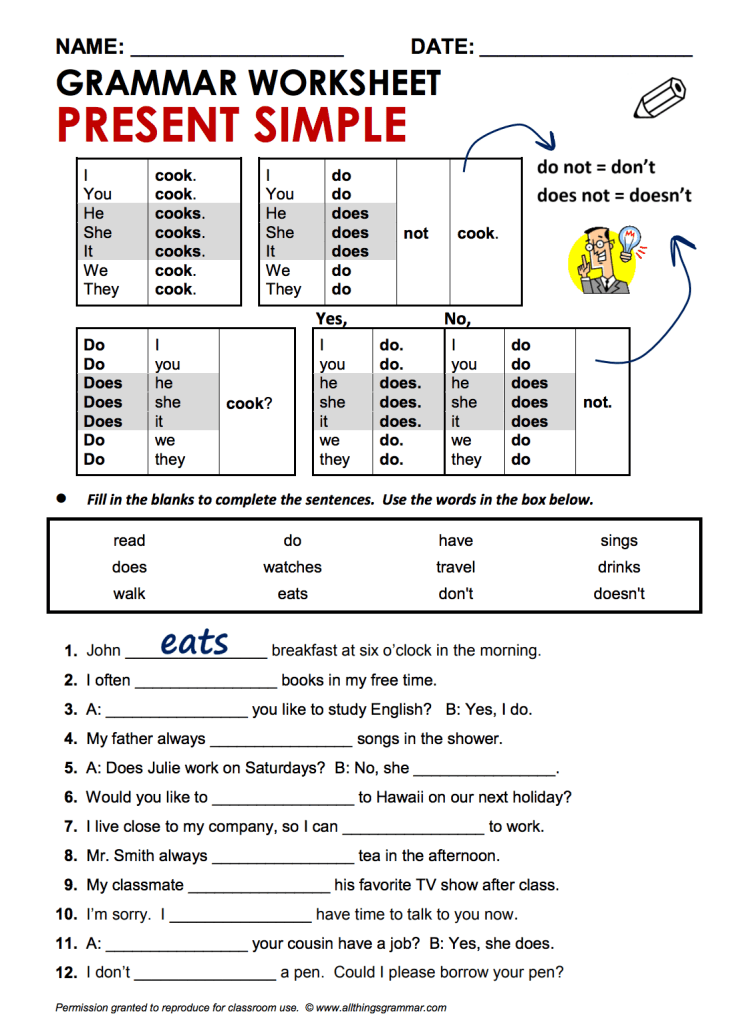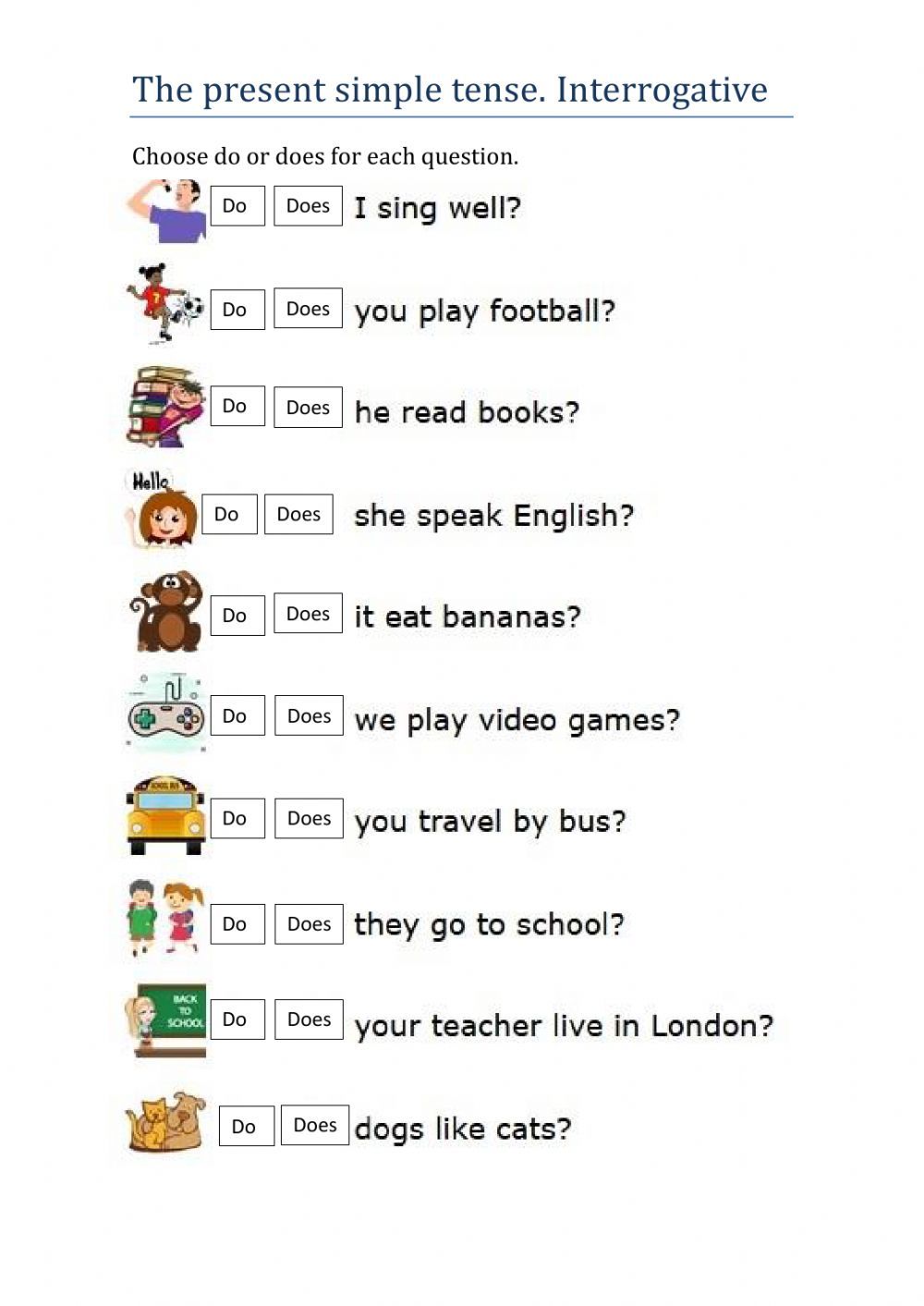Simple Present To Be: Ultimate Worksheet Guide

Simple Present To Be is one of the fundamental building blocks of English grammar. Whether you're starting as a beginner or looking to polish your skills, this guide will walk you through everything you need to know about the verb "to be" in its present tense form. Understanding and correctly using this verb can significantly enhance your communication abilities in English.
What is the Simple Present Tense of 'To Be'?

The verb "to be" in the simple present tense is unique because it changes form based on the subject. Here are the different forms:
- I am - Used when the subject is "I."
- You are - For the singular or plural "you."
- He/She/It is - When referring to a singular third-person subject.
- We are - For the first person plural.
- They are - When talking about multiple people or things.
Using 'To Be' in Simple Present

Declarative Sentences

Declarative sentences state facts or share opinions. Here's how "to be" fits into these structures:
- I am excited about learning English.
- You are my best student.
- She is a doctor.
- We are going to the park.
- They are from Italy.
Negative Sentences

To form a negative sentence, we add "not" after the verb:
- I am not available tomorrow.
- You are not (or aren't) good at football.
- He is not (or isn't) here yet.
- We are not (or aren't) finished.
- They are not (or aren't) happy about the decision.
Questions

Questions with "to be" invert the subject and verb:
- Am I late?
- Are you hungry?
- Is she coming with us?
- Are we there yet?
- Are they your siblings?
Contractions

In spoken English, contractions are commonly used to make conversation flow more naturally:
- I'm - I am
- You're - You are
- He's/She's/It's - He is/She is/It is
- We're - We are
- They're - They are
Common Mistakes to Avoid

Here are some frequent errors to watch out for:
- Using 'am' with third person: He am my friend (Correct: He is my friend).
- Using contractions incorrectly: I isn't very tall (Correct: I 'm not very tall).
- Plural agreement errors: They is here (Correct: They are here).
Worksheet Exercises

Here are some exercises to practice the use of "to be" in simple present tense:
Fill in the Blank

| Statement | Answer |
|---|---|
| ___ very tired today. | I am very tired today. |
| You ___ late for class. | You are late for class. |
| He ___ a student at the university. | He is a student at the university. |
| We ___ all in agreement. | We are all in agreement. |
| They ___ my cousins. | They are my cousins. |

Change to Negative

- He is here. -> He is not here.
- We are happy. -> We are not happy.
- You are wrong. -> You are not wrong.
- I am tired. -> I am not tired.
- They are going. -> They are not going.
Make a Question

- I am here. -> Am I here?
- She is at the library. -> Is she at the library?
- You are leaving. -> Are you leaving?
- We are ready. -> Are we ready?
- They are your friends. -> Are they your friends?
🔍 Note: Practicing with worksheets can significantly improve your grasp on verb conjugation and sentence structure.
The final thoughts on the importance of the simple present "to be" highlight its role as the backbone of English grammar. By mastering this verb, you can improve your confidence in both speaking and writing. Remember, consistent practice through exercises, like those provided, will help you internalize these forms. Over time, you'll find that your use of "to be" becomes more natural and accurate. Keep revising, practicing, and don't be afraid to make mistakes, as they are stepping stones to improvement.
Why is the verb ‘to be’ so important?

+
The verb ‘to be’ is fundamental in English because it’s used for linking subjects with their descriptions, forming questions, and creating negative sentences. It’s essential for basic sentence structure.
How can I remember the different forms of ‘to be’?

+
Associate each form with common phrases or sentences you often use. For example, ‘I am hungry’, ‘You are kind’, ‘She is here’, ‘We are going’, and ‘They are friends’. Practice writing these and similar sentences daily.
What are some common mistakes when using ‘to be’?

+
Common mistakes include subject-verb agreement errors like ‘He am’ instead of ‘He is’, or using incorrect contractions like ‘You’s’ instead of ‘You’re’.